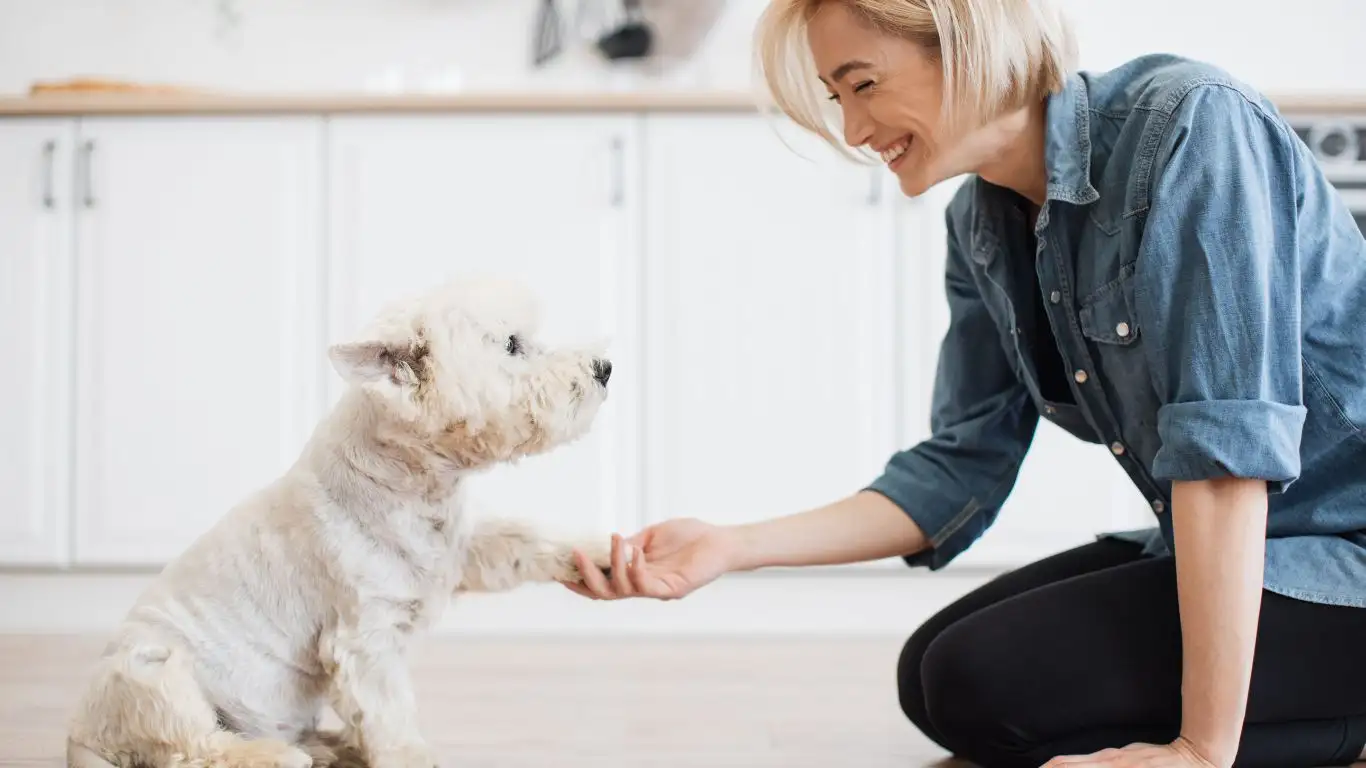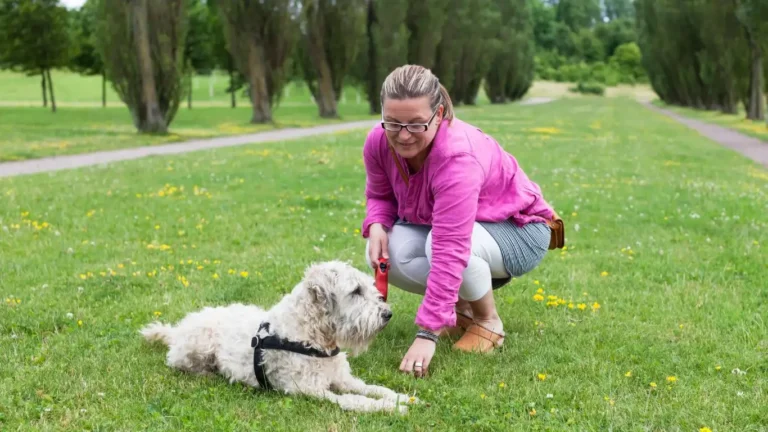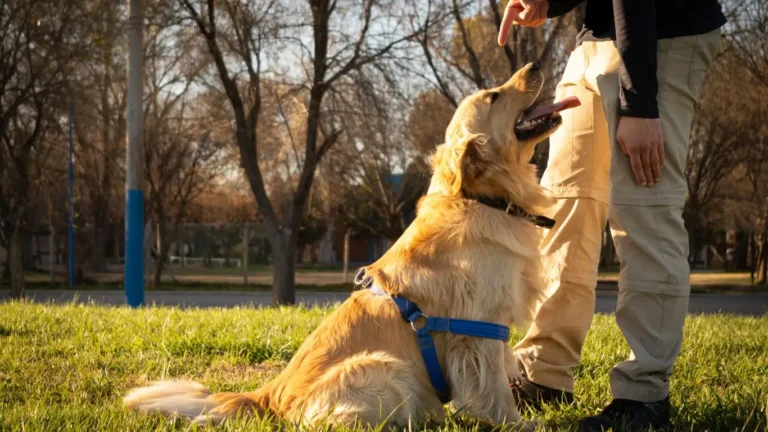Stop Dog Barking at TV Fast! Proven Training Tips That Work
Ever settle in for a cozy movie night, only to have your dog launch into full-blown alarm mode at the TV? Yep, I’ve been there! Teaching a dog to stop barking at the TV can feel like a never-ending struggle, but trust me—there’s hope. As a Certified Professional Dog Trainer (CPDT-KA), I’ve helped plenty of owners tackle this noisy habit. The good news? With patience and the right techniques, you can train your pup to chill out, even when their favorite trigger flashes across the screen.
Why Do Dogs Bark at the TV?

Before we dive into how to train a dog to stop barking at the TV, let’s look at why they do it in the first place. Understanding the root cause makes training way easier!
It’s All About Instinct
Dogs are wired to react to movement and sound. A squirrel darting across the yard? Immediate chase mode. A dog barking on TV? Instant response. Their brain doesn’t differentiate between real life and what’s on screen.
Trigger Sounds and Visual Stimuli
Some breeds, especially herding or guard dogs, are hyper-alert to movement and noises. If your dog reacts to doorbells, sirens, or animals on TV, their natural instincts are kicking in. Even subtle sounds we barely notice can be overwhelming to a dog’s sensitive ears.
Learned Behavior & Reinforcement
Has your dog been barking at the TV for a while? If so, they’ve probably developed a habit. Each time they bark and something happens—like you laughing, shushing them, or even reacting with frustration—they may see it as encouragement. In their mind, barking works.
How to Train a Dog to Stop Barking at the TV

Alright, let’s talk solutions! The key is teaching your pup a new response to TV triggers. No more barking their head off—just a calm, relaxed pup enjoying family time.
Step 1: Identify the Triggers
Start by figuring out exactly what sets your dog off. Is it other dogs? People running? High-pitched sounds? Pay attention and make note of the worst offenders.
- Try different channels and observe their reaction.
- Is it specific types of movement, or all motion?
- Do they only react to barking, or also to music and voices?
Once you know their biggest triggers, you can customize your training approach.
Step 2: Desensitize and Countercondition
This is where the magic happens! We want to teach your dog that the TV isn’t a threat—it’s actually boring. Here’s how:
- Start with the TV at a low volume. Play something that usually sets them off.
- Before they react, reward them with a treat for staying calm.
- Slowly increase the volume over multiple sessions, always rewarding silence.
- If they bark, don’t scold—just lower the volume and try again.
Consistency is key! Over time, they’ll learn that barking gets them nothing, but staying quiet earns rewards.
Step 3: Teach a “Quiet” Cue
Adding a verbal cue like “quiet” helps reinforce good behavior. When they start barking:
- Say “quiet” in a calm, confident tone.
- Wait for a brief pause in barking—yes, even half a second counts!
- Immediately reward with a treat and praise.
- Repeat this until they associate “quiet” with stopping barking.
Once they get the hang of it, gradually phase out treats and rely more on praise and petting.
Creating a Calm TV Watching Environment
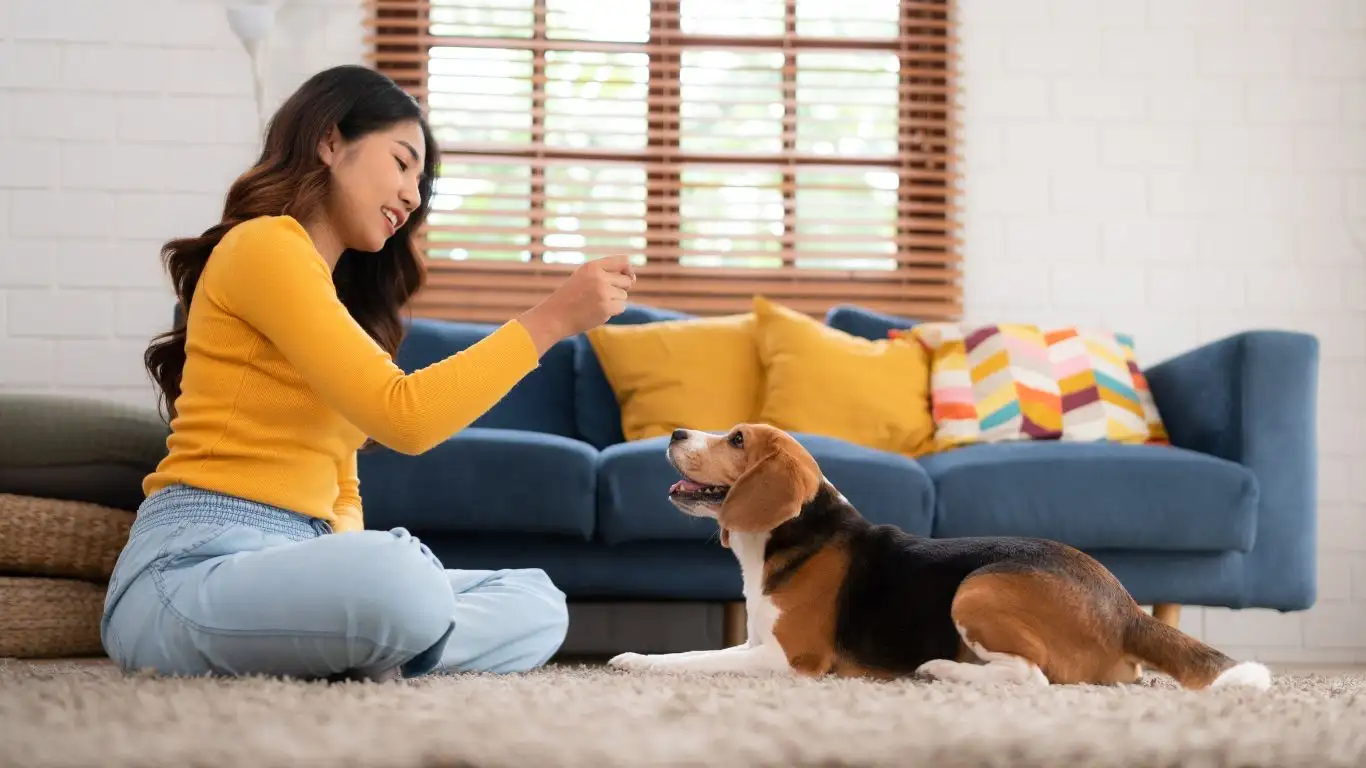
Now that we’ve started training your dog to stop barking at the TV, let’s take things a step further. Creating the right environment can make all the difference in setting your pup up for success. Trust me, I’ve worked with plenty of dogs who struggled with TV triggers, and tweaking their surroundings helped tremendously.
Lower the TV Volume or Adjust the Screen
Some dogs react more to sound, while others fixate on the movement. If audio triggers your pup, try keeping the volume lower or muting certain shows when you’re training. If movement is the problem, adjust the screen’s brightness or use a smaller screen temporarily to reduce visual stimulation.
Provide a Distraction
Giving your dog something better to focus on can redirect their energy away from barking at the TV. Here are a few ideas:
- Give them a stuffed Kong or a long-lasting chew toy.
- Use a snuffle mat to engage their nose and mind.
- Have a puzzle toy ready to keep them occupied during their favorite TV-triggering scenes.
Making TV time more engaging for your pup in a positive way reduces their need to react negatively.
Exercise and Mental Stimulation Before TV Time

A dog with pent-up energy is way more likely to bark at the TV. One of the easiest ways to curb this behavior is by ensuring they’ve had plenty of exercise and mental stimulation before you settle down for your favorite show.
Physical Exercise
A tired dog is a happy dog! If your pup has been lounging around all day, they might be looking for something to react to when the TV comes on. Try this before TV time:
- A 20-30 minute walk or a game of fetch.
- Some structured play, like tug or agility exercises.
- Letting them run in a secure yard or at a dog park.
Burning off excess energy means your dog is less likely to fixate on the TV.
Mental Stimulation
Just as important as physical exercise, mental stimulation tires your dog out in a different way. Engaging their brain helps prevent frustration-driven barking.
- Practice basic obedience commands like “sit,” “stay,” and “leave it.”
- Engage their nose with scent games—hiding treats around the house works great!
- Use food-dispensing puzzle toys to challenge their brain.
A mentally satisfied dog is way more likely to ignore the TV and relax.
Using Positive Reinforcement Training

One of my favorite things to teach dog owners is how powerful positive reinforcement can be. Instead of punishing your dog for barking, reward them for making the right choice—staying calm. Here’s how:
Reward the Quiet Moments
Most owners accidentally reinforce barking by reacting to it, even if that reaction is frustration. Instead, flip the script and focus on rewarding silence.
- When your dog stays quiet during a TV trigger, mark the behavior with “Yes!” and give a treat.
- Use calm, soothing praise like “Good quiet” when they remain relaxed.
- Make sure to catch even small moments of silence, so they learn what you want.
Use a Clicker or Marker Word
If your dog responds well to training, consider using a clicker or a marker word like “Yes!” to reinforce good behavior. Every time they remain quiet, mark and reward—it helps create a clear association that being calm gets them good things.
Gradually Increase Exposure
As your dog gets better at staying quiet, slowly increase their exposure to their triggers.
- Start with a calm show and reward silence.
- Gradually introduce more stimulating content with animals or fast movement.
- If they react, go back a step and work at a lower intensity.
Consistency is everything! Keep at it, and soon your dog will be able to watch TV peacefully without barking up a storm.
Common Mistakes to Avoid When Training
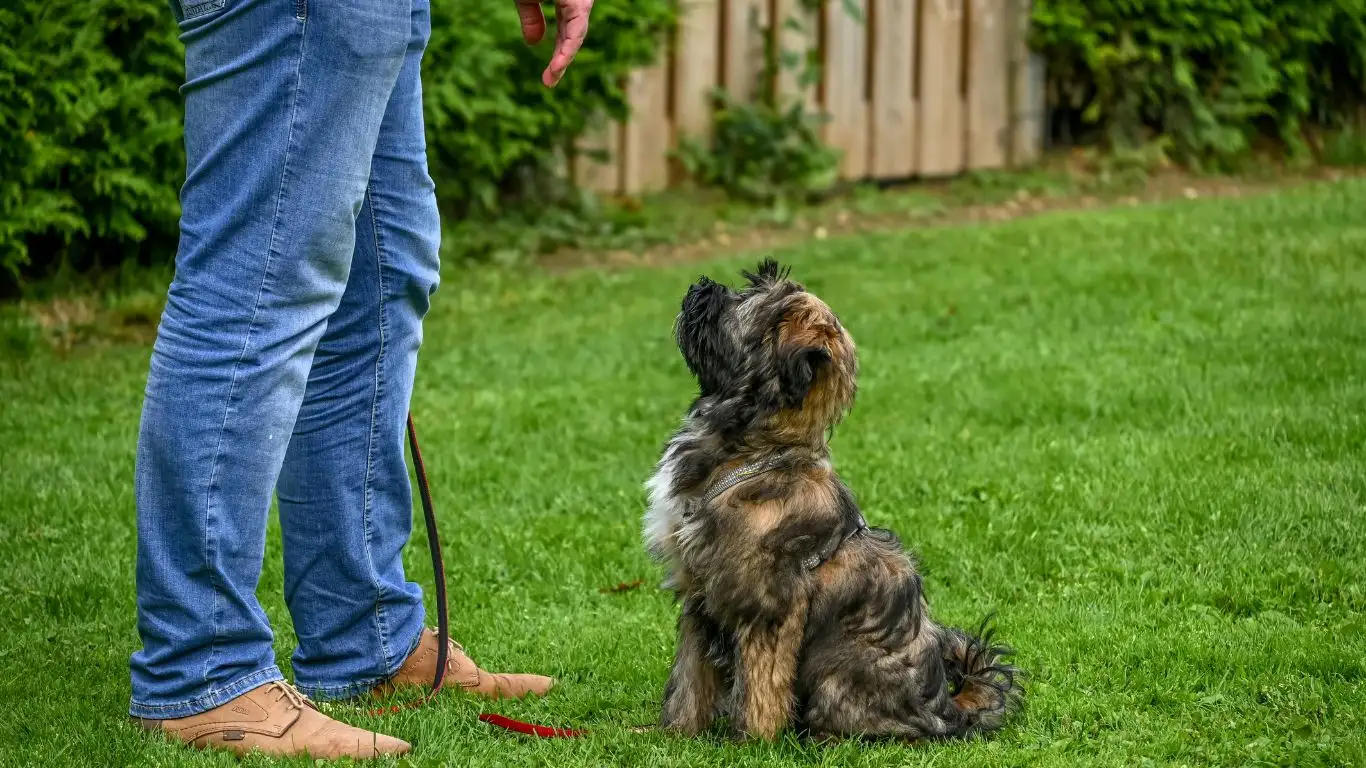
Even with the best intentions, some training mistakes can slow your dog’s progress. Trust me, I’ve seen it all—from unintentional reinforcement of barking to inconsistent training. Let’s go over a few common pitfalls so you can avoid them.
Reacting Emotionally
It’s frustrating when your dog won’t stop barking at the TV, but getting upset or yelling only adds to their excitement or anxiety. Instead of calming them down, it teaches them that barking gets attention, even if it’s negative.
- Stay calm and composed—even when they test your patience.
- Use a firm but gentle voice when giving commands.
- Remember, dogs respond best to positive reinforcement, not punishment.
Being Inconsistent
If sometimes you let them bark at the TV and other times you scold them, they’ll never fully understand what’s expected. Dogs thrive on clear and consistent rules.
- Make sure everyone in the house is on the same page with training.
- Don’t allow barking one day and then correct it the next—it confuses them.
- Stick with the training plan, even when progress seems slow.
Not Addressing the Root Cause
Sometimes barking at the TV is just a symptom of a bigger issue, like lack of stimulation, anxiety, or even fear-based reactivity. If your dog is barking excessively, it may help to:
- Ensure they’re getting enough exercise and mental enrichment.
- Work on building their confidence with socialization and training games.
- Consider consulting a professional if the behavior persists.
When to Seek Professional Help

Some dogs need extra help beyond what we can provide at home. If your pup’s TV barking is severe, or they seem stressed and anxious, reaching out to a Certified Professional Dog Trainer (CPDT-KA) or an animal behaviorist could be a game-changer.
Signs Your Dog Might Need Professional Training
It’s time to consider expert guidance if your dog:
- Gets overly aggressive or anxious when the TV is on.
- Doesn’t respond to training, even after consistent efforts.
- Shows other behavioral issues, like barking at other screens or reflections.
- Has a history of fear-based reactivity.
Trainers can assess the underlying cause of the behavior and develop a plan tailored to your dog’s specific needs.
Final Thoughts: Enjoy Peaceful TV Time with Your Pup
Teaching a dog to stop barking at the TV isn’t an overnight fix, but with patience, consistency, and positive reinforcement, you’ll get there. The key takeaways?
- Understand why your dog barks at the TV—it’s usually instinct or learned behavior.
- Use desensitization and counterconditioning to create positive associations.
- Provide plenty of exercise and mental enrichment to prevent frustration.
- Stay calm and consistent in your training approach.
- Don’t be afraid to seek professional help if needed.
With time, your pup will learn that TV time is for relaxing—not for barking at every moving shadow. So, grab the popcorn, settle in, and enjoy your favorite show with your furry friend barking-free!
References
- Certification Council for Professional Dog Trainers – Trusted certification for dog training professionals.
- American Kennel Club – Expert training advice and breed-specific insights.
- Victoria Stilwell Positively – Positive reinforcement training tips from a leading expert.
Disclaimer
The information in this article is for educational purposes only and should not be considered a substitute for professional training or veterinary advice. If your dog exhibits severe behavioral issues, consult a certified trainer or veterinary behaviorist for personalized guidance.
